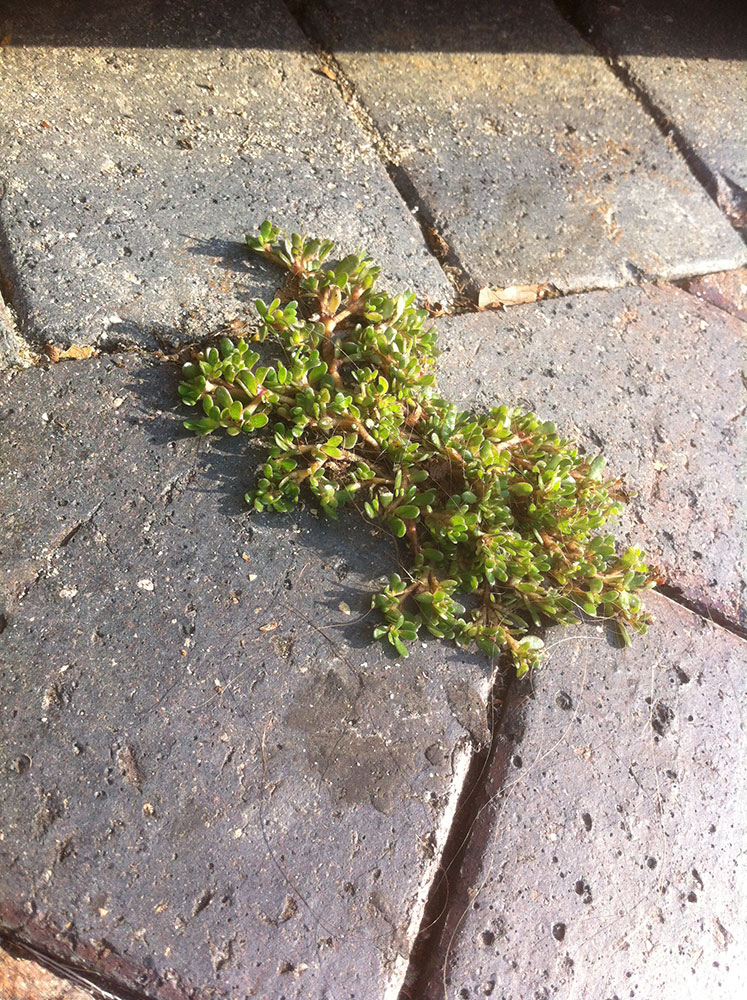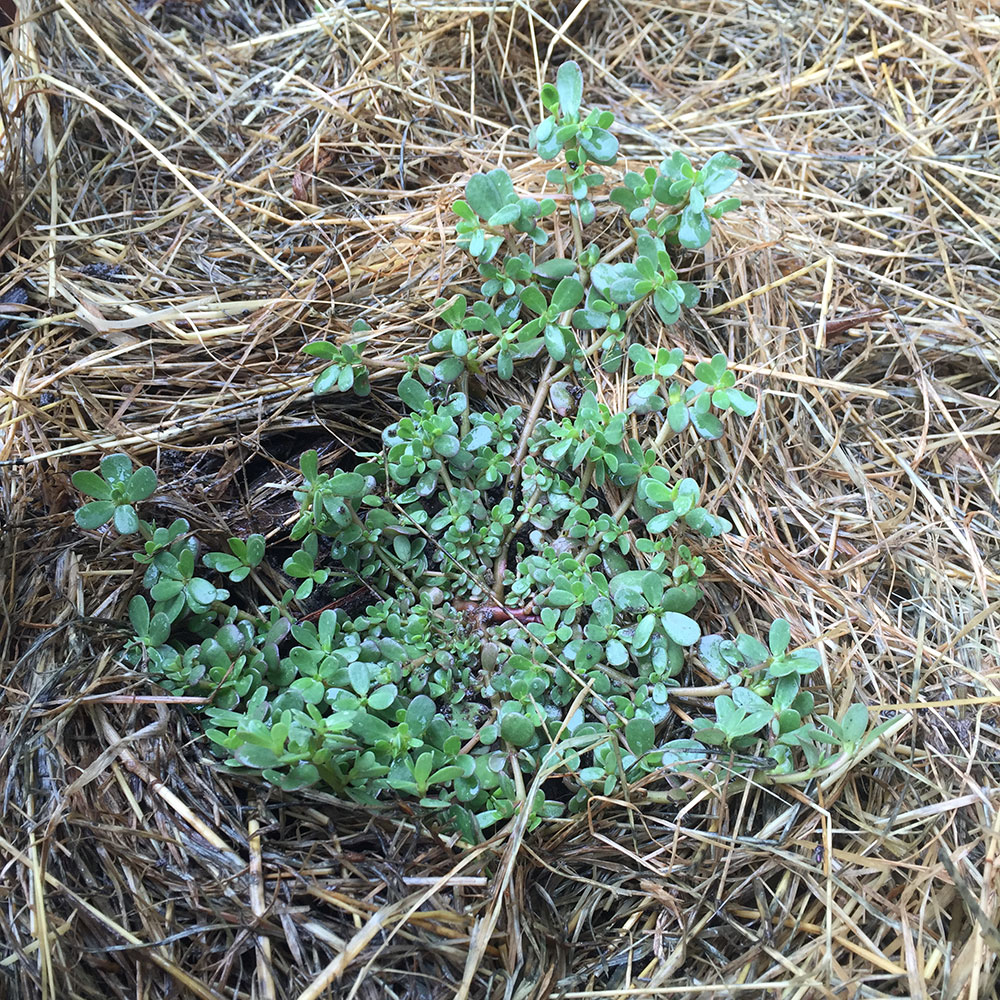Food, glorious food
There is a little yellow flower at the moment out there. Little as little can be. In most cases it is only about 3-4mm across, 4 to 6 petals. These little flowers do not come out very often, but rather prefer to pop up occasionally in the middle of hot sunny days, for a few hours only.
The plant I'm talking about to day is purslane, a common weed of disturbed areas and agriculture, but also an Australian native, traditionally enjoyed by aboriginal people.
Yes of course you could buy it at the local nursery, or as a green vegetable at you local farmer's market. But let me tell you about the wild one, the one that it IS full of vitamins and minerals. The weedy one.
There are lots of interesting things to say about this plant, and indeed there are whole blogs dedicated to it.
Distribution: This plant is cosmopolitan, as in, it grows all over the world, it is native to most continents and -oops- it's a weed all over too.
Edibility: Portulaca is food, and a good one of it too, packed with highly nutritional property, like the highest concentration of Omega3 fatty acids in the plant world, really important for people who do not eat fish (vegetarians and vegans). Its leaves are traditionally enjoyed in folk lore from Greece (in salads), Middle East and Egypt (in Tabouli) and by Aboriginal Australians, where is known as Manyeroo in Central Australia or Parnamula, pirla to Paakantyi people.
From Bush Food of NSW: The tiny black seeds are one of the most important bush foods of inland Australia, containing up to 20 per cent protein and 16 per cent fat. Joseph Maiden (1889) reported that Aboriginal people ‘pulled up the plants, throwing them in heaps, which after a few days they turn over and an abundant supply of seed is found to have fallen out’. The seed is processed by grinding it on a flat rock with a hand-held stone. The resulting flour is made into a damper.
Medicine: The plant is antibacterial, antiscorbutic, depurative, diuretic and febrifuge. The leaves are a rich source of omega-3 fatty acids, which is thought to be important in preventing heart attacks and strengthening the immune system. The fresh juice is used in the treatment of strangury, coughs, sores etc. The leaves are poulticed and applied to burns, both they and the plant juice are particularly effective in the treatment of skin diseases and insect stings. A tea made from the leaves is used in the treatment of stomach aches and headaches. The leaf juice is applied to earaches, it is also said to alleviate caterpillar stings. The leaves can be harvested at any time before the plant flowers, they are used fresh or dried. This remedy is not given to pregnant women or to patients with digestive problems. The seeds are tonic and vermifuge. They are prescribed for dyspepsia and opacities of the cornea.
See this link for nutritional facts, and here for clinical studies information.
In Traditional Chinese medicine the plant is known as Ma Chi Xian and is extensively used. Generally regarded as a longevity herb due to its nutritional qualities and the fact that is a natural antibiotic. Have a look at this link for further information on how it has been used in Chinese herbalism for millennia.
More? What about the fact that so many hybrids and selective strains have been crafted into flowering wonders of all sorts, like this, from Bunnings, only $6.78! Lol
It's free, outside your door, in all of its goodness.
It is a summer plant, so for the antipodean summer it's happening right now. This is a fleshy, yummy, nutritious and available vegetable that you probably have already in your garden.
Don't kill it. Eat it.








